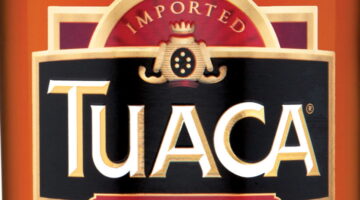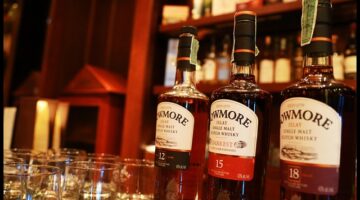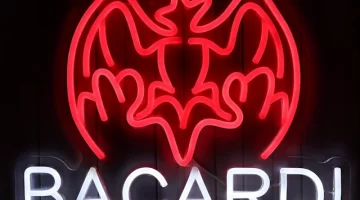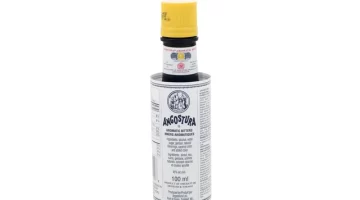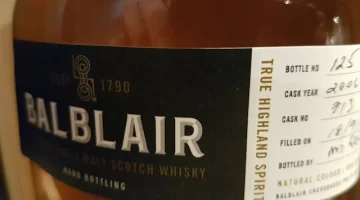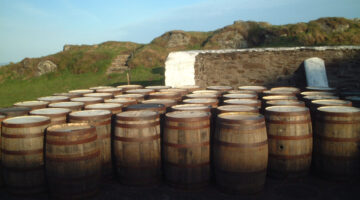What is Cointreau?
Travel Distilled explains what Cointreau is, the history of this French spirit, how and where it is made, how to drink it and its use in cocktails and cooking.
Cointreau is a type of triple sec—an iconic brand of orange-flavored liqueur. Renowned for its perfectly balanced sweetness and fruity character, this delicious liqueur has played a crucial role in cocktail mixology and cooking.
What is Cointreau’s History?
Established in 1849, the Cointreau distillery is a legacy handed down from the hands of brothers Adolphe and Edouard-Jean Cointreau. The French distillery, based in Angers, became a hallmark in the spirits industry when they formulated a new, uniquely flavored liqueur—Cointreau.
Edouard combined sweet and bitter orange peels with pure alcohol, marking the birth of a new drink. It stood the test of time, its recipe remaining unchanged since its creation, underlining the timelessness of its unique flavor.
What is Cointreau’s Production Process?
A perfect balance between sweetness and freshness—this is the mantra of Cointreau’s flavor. A careful selection of sweet and bitter orange peels forms the soul of the Cointreau production process.
Cointreau’s makers emphasize naturalness. Their meticulously chosen oranges are dried under the sun, allowing for optimal aroma and flavor extraction. The dried peels are soaked in pure alcohol, the fusion allowed to sit until the fruit’s core essence has permeated the blend.
The resulting elixir, full of fresh and zesty flavors, is then twice distilled in copper stills, yielding the crystal-clear liquid we know as Cointreau. It has an alcohol content of around 40%, and it’s flavor complexity contributes immensely to its multifaceted application.
Origin and Manufacturing Location
Cointreau is proudly French, with its origins deeply rooted in Angers, a city in the Loire Valley. Every bottle of the orange liqueur is still produced at the historic Carré Cointreau in Angers, maintaining a connection to its heritage and ensuring the authenticity of its craftsmanship.
What is Cointreau’s Cultural Significance?
Born in the heart of France, Cointreau is deeply engrained in the fabric of French drinking culture. Renowned for its fine quality, the brand quickly achieved international acclaim. In the glamorous era of the 20th-century cocktail culture boom, it became a fixture on global bar counters.
In addition to its influence on the beverage landscape, Cointreau became associated with high-end fashion and arts—finding representation in high-profile events such as Paris Fashion Week, adding a further cultural layer to the brand.
How and When to Drink Cointreau
 Cointreau can be enjoyed in several ways. Consumed neat or on the rocks, it becomes a pleasant and warming digestif. In cocktails, its versatility shines brightly. Be it a classic Margarita, a Cosmopolitan, or a Sidecar—the use of Cointreau lifts the flavor profile, providing a refreshing orange kick.
Cointreau can be enjoyed in several ways. Consumed neat or on the rocks, it becomes a pleasant and warming digestif. In cocktails, its versatility shines brightly. Be it a classic Margarita, a Cosmopolitan, or a Sidecar—the use of Cointreau lifts the flavor profile, providing a refreshing orange kick.
However, Cointreau isn’t only for late-night cocktail hours—it fits elegantly in daytime and dinner drinks. For instance, mixing it with tonic or adding a splash to your champagne brings an additional twist, perfect for a sunny brunch or a classy aperitif.
Cointreau in Cocktails and Cooking
Over the years, Cointreau has been hailed as a cocktail staple. Its seamless blend with other ingredients and flavors forms the basis for countless cocktails worldwide.
Beyond cocktails, Cointreau has a place in culinary arts, adding depth and complexity to both sweet and savory dishes. Its distinct orange essence enhances the flavor profile of recipes such as orange glazed chicken or a decadent chocolate-orange dessert, for instance.
From a humble start to worldwide fame, Cointreau embodies sophistication and a celebration of flavor. Its elegant harmony of bitter and sweet embodies a joyous salute to the oranges from which it’s crafted—a legacy proudly carried forth since 1849. For connoisseurs of fine beverages or enthusiastic cocktail creators, this legendary French liqueur remains an indispensable part of drinking culture.




